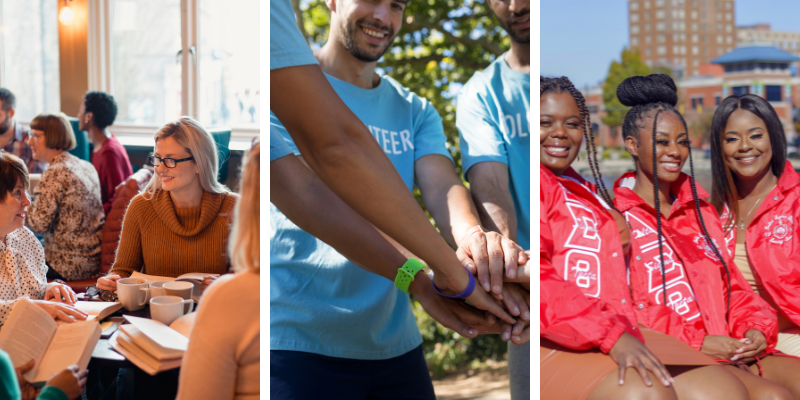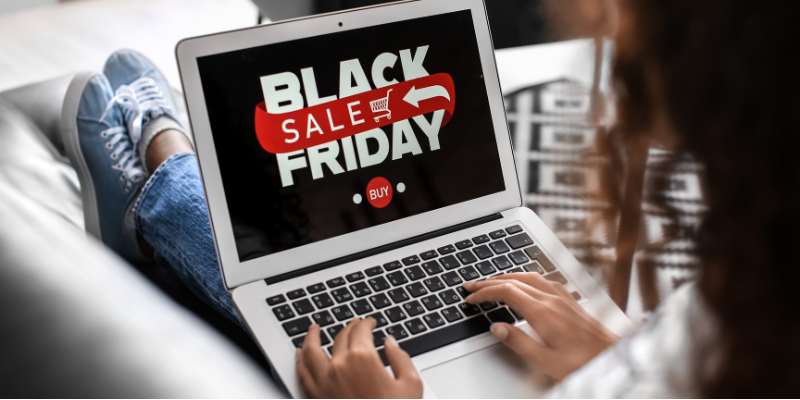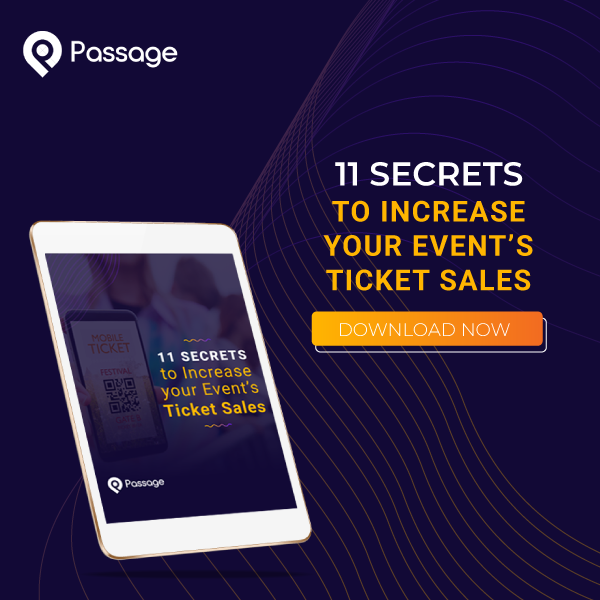The entertainment is ready. Decorations are in place. Food and drinks are ready to serve. It’s showtime!
There’s just one problem.
Where are the customers?
Promoting your event is a key component of your business strategy as an event producer. But it doesn’t come easily to everyone, and there is so much (good and bad) information out there that it can get overwhelming.
Maybe you’ve tried some promotion strategies in the past with limited success. Or maybe you’re just looking for creative ways to maximize your revenue this season when many venues will experience limited capacity due to the ongoing pandemic.
Want to know what works and what doesn’t work when promoting your event? Follow these tips to nail down the perfect strategy.
Part 1: Online Advertising
Digital ads can be a great way to jump-start traffic to your event’s website. But there’s a literal world of websites out there – where do you start?
*What Works*
Extremely targeted ads
If your event is located in Pawnee, Indiana, you don’t need to run an ad campaign that targets folks all across the country. Stick with your local area. Social media is a great place to run online ads, but those, too, should be highly targeted. Create audiences based on users who already “like” your page or those who have relevant interests. Consider the average age of your customers, too, and narrow your ads’ target audience to match that demographic.
Remarketing
Remarketing, or sometimes called retargeting, is a strategy which shows digital ads to users who have already visited your website using a tracking pixel or cookies. This is a powerfully effective strategy because it targets people who are (1) already aware your event exists and (2) have considered supporting you. Remind them why they were interested in your event, to begin with, and invite them to come back and finish their purchase.
Email remarketing
While you’re working to find new customers, don’t forget about the fans you already have! At the start of the season, or even a little further in advance, send emails to everyone who purchased tickets from you last season to let them know what new scares you have in store for them this year. You could even offer a discount if they purchase tickets before a given date, or just offer a discount for being a loyal customer.
*What Doesn't Work*
One and done
It takes on average eight impressions (or ad views) for a customer to remember seeing your ad. And it may take even more than that for them to decide they’re ready to buy. You can’t run one set of online ads and expect to see tons of new customers. It requires a sustained effort across multiple channels, including a solid social media strategy, for your ads to be effective. Read on for ways you can increase those impressions, in some cases without increasing your budget.
Want to learn how you can use your Passage account to remarket to your customers? Schedule a demo, or set up an onboarding call with your support team.
Part 2: Social Media
Everyone wants to go viral, but it’s not as easy as it sounds. Here’s how to focus on the right strategies to achieve your goals on social media.
*What Works*
Minimum effective dose
You don’t have to make social media your full-time job to be effective. Still, it’s important to have an active presence. The more places potential customers can find you, the better. Some users prefer Facebook, while others spend their time on Instagram or Tiktok. Make sure you have an account on as many channels as you can reasonably maintain, and remember that it’s ok to post the same content to multiple channels.
Posting often
Events have an advantage that many businesses don’t: there’s no shortage of interesting things to see, hear, and experience. Capture all of that as often as you can so fans can see what’s happening at your event or during the preparations leading up to it. If you’re not social media-inclined yourself, invite some of your team members to get in on the action.
You don’t have to create new content from scratch every time you post, either. Share content from other pages/accounts. If you tag the page, they might give you a boost, too!
Video
Video is king in the social media game. That doesn’t mean you have to invest in expensive cameras or tripods; your phone is fine. Make sure you have good lighting and capture your props, scareactors, and other elements of your event in action. It will make for engaging, shareable content on social media.
Using the tools available
There’s no need to reinvent the wheel. Use the tools available online to help to plan and execute a solid social media strategy, not just in the weeks leading up to your event but throughout the year as well. You can remix and reuse some of the content you captured while you were open to build excitement until you open the next season.
Here are a few of the tools we love:
- Creating, scheduling, and managing posts across channels: Hootsuite, Buffer
- Photos: Pablo, SnapSeed, Canva, Adobe Spark
- Video: Animoto, Adobe Spark
- GIFs: Rippl, Legend, Adobe Spark
Incentives
You could also offer a discount for ticket buyers who share your event on their own timeline. If you’re using Passage, this feature is built into your ticketing options: just enter the percentage or dollar amount you want to offer as a discount, adjust the default text if you wish, and you’re good to go.
Managing your reputation
We’ve got a whole blog post about the online review sites you should know about as well as tips to help you get more five-star reviews.
*What Doesn't Work*
Buying “Likes”
Sure, it might boost your ego to have tons of new likes on your Facebook page, but those aren’t real fans. More importantly, they’re not potential customers. The whole point of social media is to interact with your fans and to help new customers find you. Your energy (and funds) would be better spent creating great content and engaging the fans you already have on your page.
This is not to say you shouldn’t run ads to help new fans find your page or run a contest to encourage people who already like your page to share it. Those can be effective strategies. But steer clear of vendors who promise a guaranteed number of new likes on your page and don’t spam lists of users or emails who have never interacted with your business – you wouldn’t like that and your customers won’t, either.
Part 3: Media Coverage
All press is good press, right? It is if you build the right relationships and nurture them throughout the year.
*What Works*
HARO (“Help a Reporter Out”)
This is one of our favorite resources for reaching out to journalists. It’s a three-times daily email with inquiries from real journalists around the country looking for sources for stories they’re working on. The list is broken into categories such as business and entertainment. If you can help one of the reporters out, reach out! It may not even be an event story; perhaps they’re just looking for insights into how small businesses are adapting to COVID-19.
You can get on the email list at http://HelpAReporter.com. Our best tip is to email them fast; many journalists are on a tight deadline and will have already filed their story by the time you reach out three days later. Be precise and include all relevant info in your initial email. Finally, be sure to thank them both for their consideration and if they end up quoting or interviewing you for a story.
Local relationships
Media relations is not a numbers game, it requires a targeted approach and years of cultivating relationships to be truly successful. Start by gathering a list of 5-10 local press contacts who cover your industry (who covered Halloween stories last year, for example). Reach out to them individually and let them know you appreciated their coverage of the industry last year and ask if they need any help with stories for the upcoming season. You could even invite them to a media preview of your event!
Keep up with your contact throughout the year: let them know when you’re starting to prep for the season and what kinds of new things you’re working on. Be sure to provide all relevant information upfront, so there’s less back and forth, and craft a personalized pitch to each contact.
They probably can’t cover every story you pitch them, but keeping in touch and providing relevant details about what your business is up to will help keep you top of mind when they are working on a story where you might fit. Remember to thank them any time they cover your business or quote you in a story. A little appreciation goes a long way.
Bloggers
Bloggers and influencers can be another great resource to help you get the word out. Just like with traditional journalists, work to build relationships with these influencers rather than treating them as a transactional interaction. Offer to trade coverage or link back to their blog/social pages. You could also offer to write a guest blog or provide them with pre-written content about a topic their readers are interested in. This gives them a day off from writing, and helps you both build your following.
Just like you did with your media contacts, start building a targeted list of bloggers who cover either your local area or your industry.
*What Doesn't Work*
“Spray and Pray”
Spamming every journalist whose email address you can find with the same canned pitch will not yield the best results. It’s a waste of your time and theirs. At its worst, this strategy can give the impression that you’re a difficult source to work with and will make reporters less likely to reach out when they do have a relevant story.
Stick with targeted, relationship-based pitches and you’ll find that over time you can build mutually beneficial relationships with local media.
Part 4: Partnerships
No money for a sales team in the budget? Partnerships and sponsors can be an effective strategy for boosting your sales and bringing in more revenue before the season even begins.
*What Works*
Fundraisers and Group Sales
Partnering with local organizations or businesses can help both parties increase awareness and revenue. Look for youth organizations such as boys and girls scouts or athletic boosters in your community: they are always in need of creative fundraising ideas as well as age-appropriate activities for their members.
There are two tactics you can use here. Offer groups special bundled ticket packages for their members; give them an exclusive discount for bringing a large group. Alternately, you can help them raise funds (and boost your own revenue) by providing them with a special tracking link; every time the link is used to purchase a ticket, give them a donation such as $1 per ticket. It’s minimal effort on their part, all they have to do is get the word out among their members or share it with anyone in the community who wants to support their organization. And it provides both you and their group with a revenue boost. If they help refer 100 people, they get $100 and you get an additional 100 ticket sales.
Sponsorships
If you haven’t read our blog Sponsorships: the Secret Money Makers, bookmark it now; it’s a great resource for helping you get started. Sponsorships can provide your event with pre-season revenue to help cover your costs, and they help boost your sponsor’s visibility, too.
*What Doesn't Work*
Trying to get something for nothing
Partnerships work best when both parties feel like they’re getting an equal benefit from the relationship. Offering a meager benefit or one that doesn’t line up with the organization’s needs is not likely to get you a “yes”. Tailor your offer, and while you’re at it, be sure to target the right partners. For more on how to do that, check out Why everyone said “NO” to your sponsorship request.












